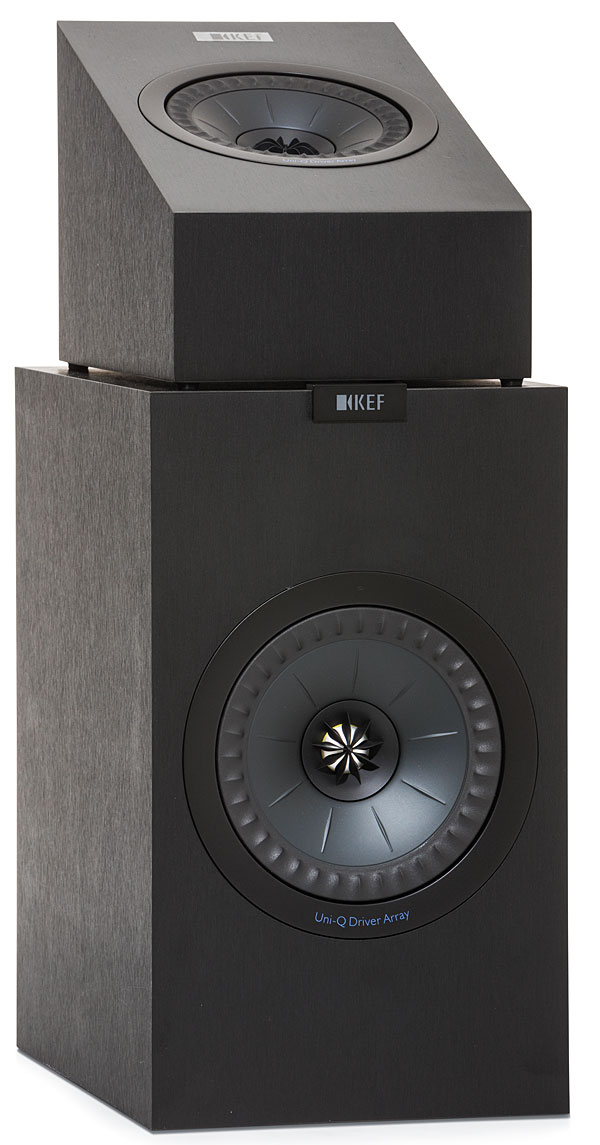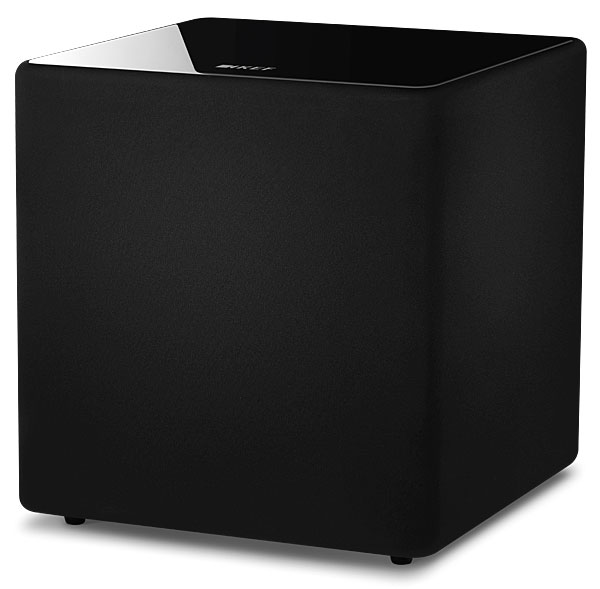Albeit it is understandable if you did not have available a pair of the reviewer darlings KEF LS50 for direct comparison, but from your memory how do these compare? Granted the LS50s are far prettier looking, but when the lights are out in the theatre it matters how they sound!
Secondly, would you consider using another Q350 instead of the Q650c as a centre channel?
KEF Q Series Q350 Speaker System Review

AT A GLANCE
Plus
Atmos add-ons
Coincident Uni-Q drivers
Sub has three placement EQ modes
Minus
Grilles not included
Not as dressy as other KEF products
THE VERDICT
KEF’s Q series combined with its new Kube subwoofer line brings the trademark Uni-Q driver array and a potent bottom end to a lower price point, with reliable performance and an Atmos add-on option.
One of the headlines I considered for this review was “What Becomes a Legend Most.” It’s a poignant song from Lou Reed’s New Sensations. Before that, it was an advertising slogan that sold mink coats in ads featuring Judy Garland, Lauren Bacall, and Marlene Dietrich, among others. Somehow, it fits KEF, the British speaker manufacturer responsible for numerous driver-related innovations, including the Uni-Q coincident array. KEF’s Muon and Blade towers have the fragrance of luxury about them.
The LS50 mini-monitor is a crowdpleasing peacock, always strutting down the runway in new colors. However, less affluent surround audiophiles can have a slice of the KEF tradition in the new and affordable Q Series. And no innocent little minks had to give up their lives.
Basic Black
Unlike the luminaries above, the Q Series isn’t especially fancy looking. The matte black vinyl-clad appearance of my samples was decidedly plain, aside from a protruding KEF badge. The line includes three floorstanding speakers: the Q950 ($900/each), Q750 ($750/each), and Q550 ($550/each). Then there are two monitors, the Q350 ($650/pair) and Q150 ($550/pair), as well as the Q650c center ($650) and the Q50a Atmos-enabled elevation module add-on ($500/pair). The latter can sit atop any of the floorstanders or monitors to bounce Dolby Atmos or DTS:X height channels off the ceiling.
KEF makes a pointed suggestion by shipping all Q Series models except the Q50a without grilles. And KEF’s online manual for the Q50a confirms that grilles are included for that model (see “Inside the Box”). If you want grilles for the other speakers, you can buy them at extra cost. But if you do that, your guests won’t see the fairly subtle blue Uni-Q Driver Array lettering on the edge of the basket, and shame on you for hiding a legend behind drab fabric. The system under review here comprises four of the Q350 monitors, topped with four of the Q50a, plus the Q650c center and the Kube12b subwoofer ($700), for a total price of $3,150.

The Uni-Q array is the centerpiece of most KEF products. The tweeter is mounted in the center of the throat of the woofer or midrange driver, effectively using the cone as a waveguide, albeit one that is moving with the audio signal. The Q350 monitor mates the 1-inch tweeter with a 6.5-inch woofer, while on the baffle of the Q650c center the 6.5-inch Uni-Q is flanked by one additional woofer to the right and one Auxiliary Bass Radiator (passive radiator) to the left. The Q50a places the tweeter at the apex of a 5.25-inch woofer. All diaphragms are aluminum.
Atmos-enabled speakers are the convenience-over-performance, and therefore not surprisingly the most popular, method of adding height channels to your system. The best effect is achieved by mounting actual height speakers overhead. However, that solution is often unpalatable, so bouncing the higher frequencies of the height signals off the ceiling provides a reasonable sense of elevation in a practical manner. Dolby Labs tells us that Atmos-enabled speakers work best in rooms with a flat, hard ceiling at a height of 8 to 9 feet, though up to 14 is acceptable. Light fixtures, moldings, and vents probably won’t interfere much with the ceiling bounce; vaulted or angled ceilings and acoustic treatments will.

The Kube12b sub places a 12-inch reinforced-paper cone driver in the front of a solid, sealed enclosure resulting in a total weight of 45 pounds. It’s powered by an internal 300-watt amplifier, conservatively specified in RMS (not peak) power. Intelligent Bass Extension, or iBX, uses DSP to analyze the input signal and reduce bass extension as volume increases to ensure there’ll be useable output even at high volume levels. Even the inputs are smart, auto-detecting mono LFE or stereo signals and adjusting gain to match. Three DSP EQ settings tailor the sub’s output to the situation with freestanding, in-wall or in-cabinet, or corner placement. This may not be a substitute for well-done room correction, but it affords more flexibility.
- Log in or register to post comments


… the LS50 and Q350 are pretty darn close, with the (slight) edge going to the LS50 in the mid bass (the treble performance, to me, is a wash). I think KEF hit one out of the park with the 2017 Q series.





































































